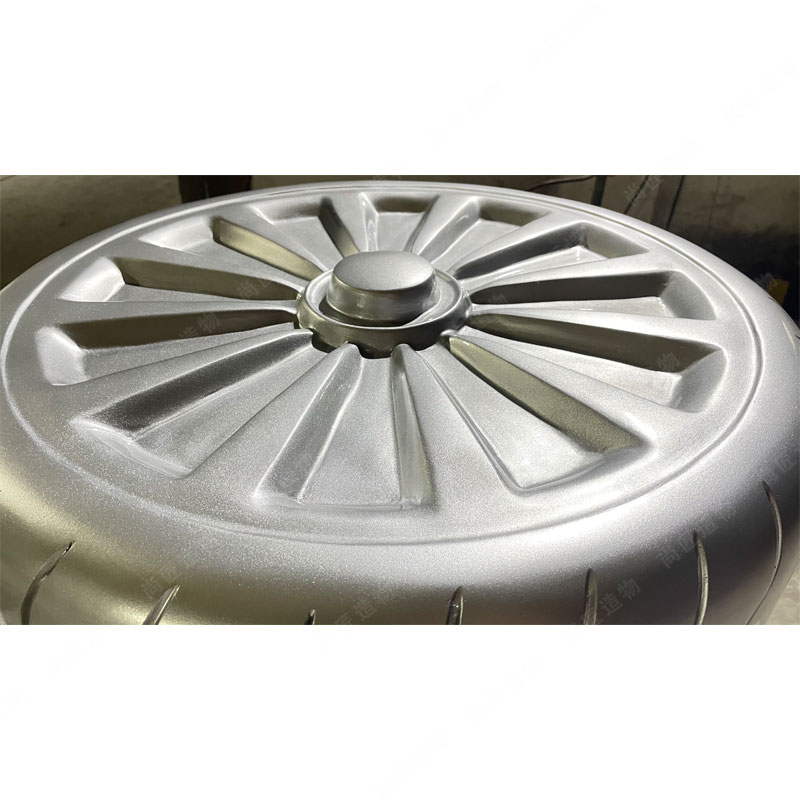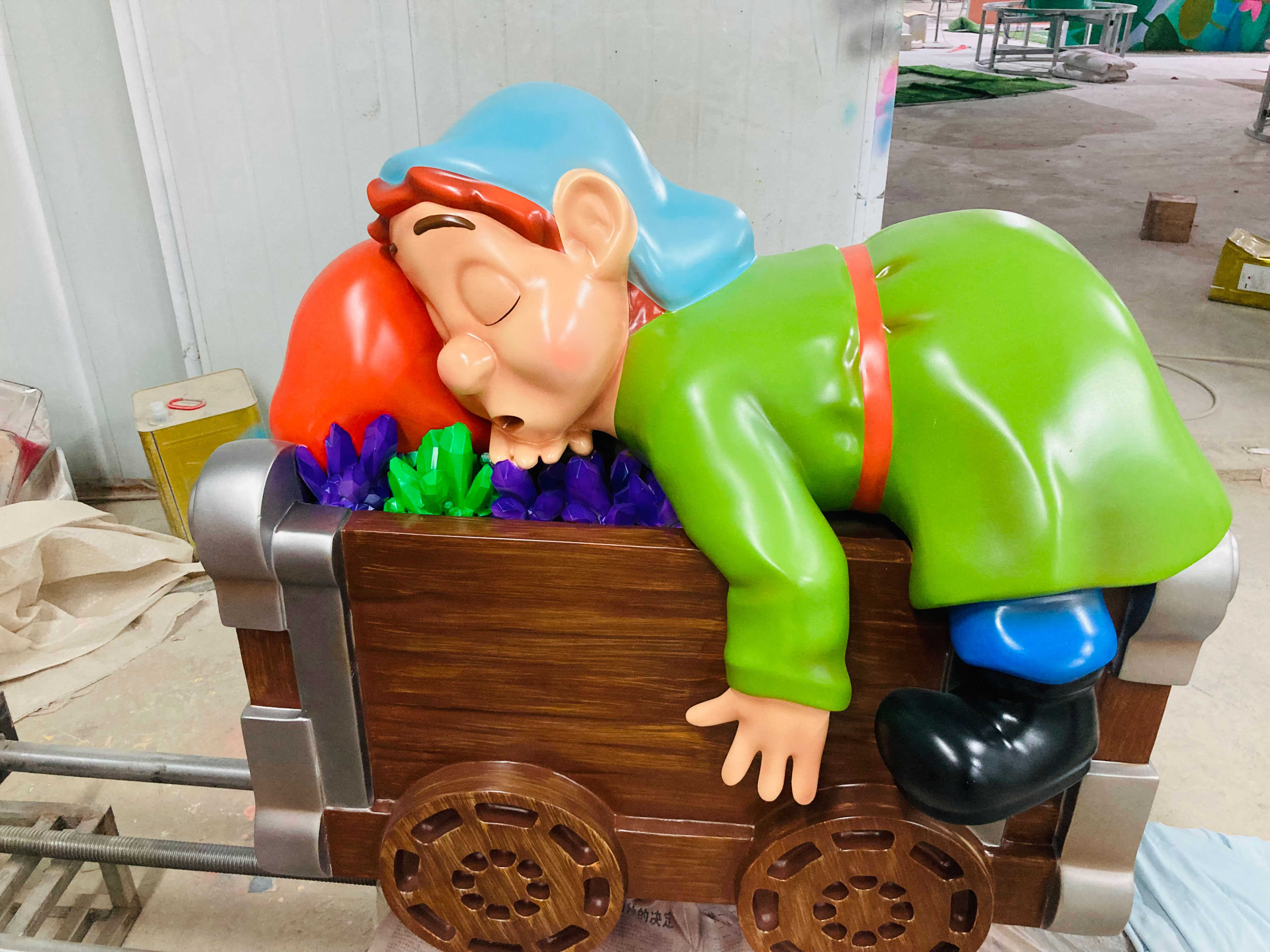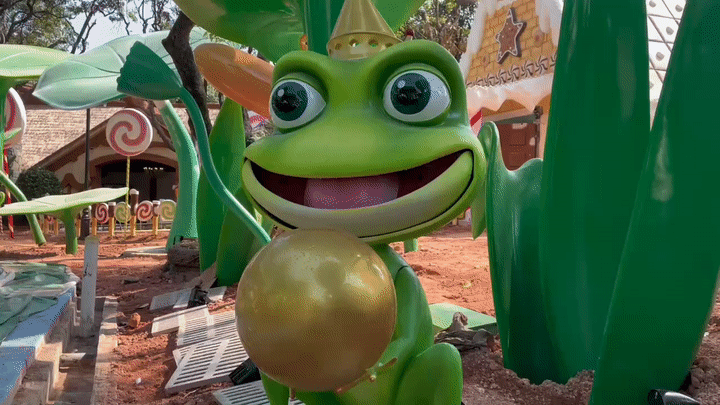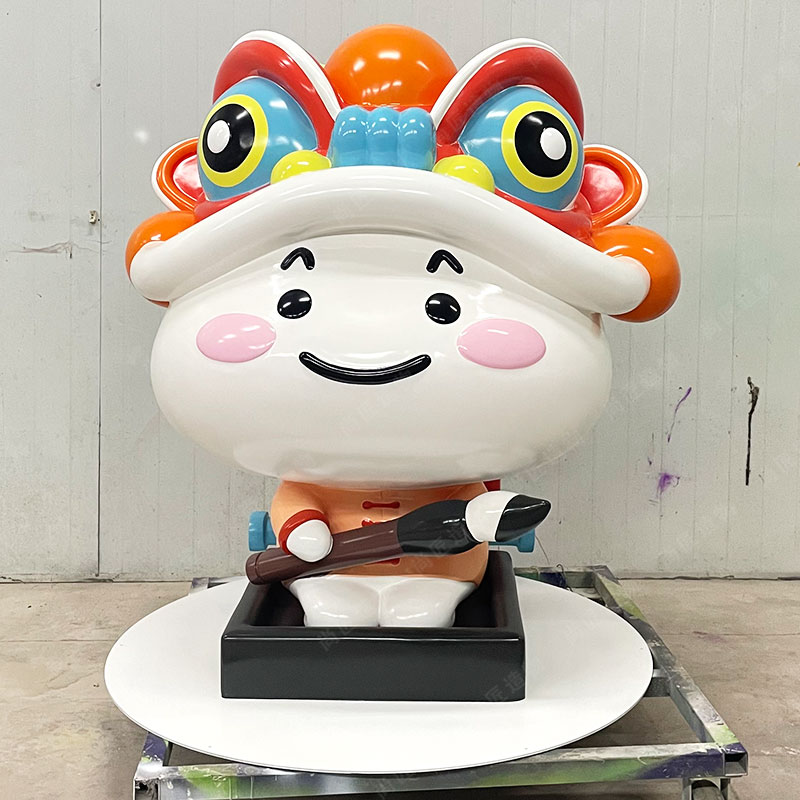Key Takeaways
Stainless steel sculptures designed for outdoor spaces combine aesthetic innovation with structural resilience, making them ideal for both public installations and private landscapes. The material’s corrosion resistance ensures longevity, while modern fabrication techniques—like laser cutting and TIG welding—enable intricate designs that withstand harsh weather.
"A sculpture’s durability starts with material selection. Always verify ASTM-certified stainless steel grades, such as 304 or 316, for outdoor use," advises metalwork engineer Clara Mertens.
When considering custom designs, 3D modeling allows artists to refine proportions and structural integrity before fabrication. Mass-produced pieces, while cost-effective, often lack the tailored fit required for site-specific installations like IP character sculptures. For public spaces, prioritize designs that harmonize with their surroundings—geometric forms suit urban plazas, while organic shapes complement natural landscapes.
Key considerations include:
- Weatherproofing: Seal joints to prevent water ingress, a common cause of corrosion.
- Foundation planning: Ensure load-bearing bases for freestanding installations.
- Maintenance: Schedule annual inspections to clean surface contaminants.
For those seeking longevity, opt for suppliers offering warranties against material defects. Balancing artistry with engineering principles ensures outdoor sculptures remain functional landmarks for decades.

Outdoor Stainless Steel Sculpture Durability
Stainless steel’s resilience makes it a preferred material for outdoor sculptures, combining aesthetic appeal with structural longevity. Its corrosion-resistant properties stem from chromium content (typically 10-30%), which forms a passive oxide layer when exposed to oxygen. This self-repairing shield protects against moisture, UV radiation, and temperature fluctuations ranging from -40°C to 900°C. Advanced fabrication techniques, such as TIG welding and laser cutting, ensure seamless joints that withstand decades of exposure.
For coastal or high-humidity environments, marine-grade alloys like 316L enhance resistance to salt spray and acidic pollutants. Unlike traditional materials, stainless steel maintains its reflective finish without requiring frequent maintenance—a key advantage for public installations. Engineers often integrate drainage systems into base designs to prevent water pooling, while powder coatings add extra protection for Cartoon sculpture projects requiring vibrant colors. Rigorous stress simulations during 3D modeling phase help identify potential weak points, ensuring sculptures meet wind load ratings up to 130 mph. These technical safeguards, paired with artistic vision, create durable landmarks that evolve naturally through subtle surface patinas while retaining structural integrity.

Custom vs Mass-Produced Metal Art
The choice between custom and mass-produced stainless steel sculptures hinges on balancing artistic vision, budget, and functional requirements. Custom designs offer tailored solutions for unique spaces, allowing clients to collaborate directly with artists or fabricators on dimensions, themes, and structural specifications. These one-of-a-kind pieces often integrate site-specific elements, such as wind patterns or sunlight angles, requiring advanced engineering to maintain stability.
Mass-produced sculptures, conversely, prioritize affordability and scalability. Pre-designed templates enable faster production cycles, making them ideal for commercial projects requiring multiple identical units. While less personalized, modern manufacturing techniques like laser cutting and robotic welding ensure consistent quality across batches.
| Factor | Custom Sculptures | Mass-Produced Sculptures |
|---|---|---|
| Lead Time | 8–16 weeks | 2–6 weeks |
| Cost Range | $5,000–$50,000+ | $800–$10,000 per unit |
| Durability | High (site-tested materials) | Moderate (standard alloys) |
For projects needing cost-effective alternatives without sacrificing weather resistance, some designers opt for composite materials like Fiberglass sculpture, which mimic metallic finishes at lower weights. Whether commissioning bespoke art or selecting pre-engineered installations, aligning with certified fabricators ensures compliance with outdoor durability standards—a critical bridge to the next phase of 3D modeling and precision engineering.

3D Modeling for Precision Sculpture Design
Modern stainless steel sculpture design relies heavily on 3D modeling to achieve the balance between artistic vision and structural accuracy. By leveraging advanced software like CAD or Blender, artists and engineers collaboratively transform conceptual sketches into detailed digital prototypes. This digital approach allows for millimeter-perfect measurements, ensuring complex geometries—such as curved surfaces or interlocking components—retain their integrity when scaled for outdoor installations. For instance, kinetic sculpture designs require precise simulations of weight distribution and motion paths to withstand environmental stressors like wind or temperature shifts.
Beyond static forms, 3D modeling identifies potential weaknesses early, such as stress points or material fatigue, through finite element analysis (FEA). This proactive troubleshooting minimizes fabrication errors and material waste. The technology also streamlines communication between stakeholders, enabling real-time adjustments to aesthetics or functional elements before cutting metal. While traditional sculpting methods remain valuable, digital precision ensures outdoor sculptures meet both artistic intent and engineering standards, creating durable works that endure decades of exposure.
Weather-Resistant Engineering in Metal Art
Stainless steel’s exceptional resistance to environmental stressors makes it a cornerstone of outdoor sculpture design. Engineers prioritize alloys like 316L, which contain elevated chromium and nickel levels, to form a self-repairing oxide layer that combats corrosion from rain, humidity, and temperature fluctuations. This scientific approach extends beyond material selection: fabrication techniques such as TIG welding and laser cutting minimize weak points, while angled surfaces and concealed drainage systems prevent water pooling.
Advanced coatings, including ceramic-based sealants or powder finishes, add further protection without compromising aesthetic intent. For instance, textured finishes on realistic sculpture installations can mimic organic details while maintaining structural integrity. Computational fluid dynamics (CFD) models also play a role, simulating wind loads to optimize weight distribution and anchor placements. By integrating these strategies, artists and engineers ensure sculptures withstand decades of exposure, balancing bold visual statements with rigorous climatic adaptability.

Quality-Certified Materials for Longevity
Selecting the right materials is foundational to ensuring outdoor stainless steel sculptures withstand decades of exposure. Industry-standard certifications, such as ASTM International’s A240 specification, guarantee that alloys like 304 and 316 stainless steel meet rigorous benchmarks for corrosion resistance and structural integrity. These grades contain elevated chromium and nickel content, forming a passive oxide layer that combats rust, UV degradation, and pollution—critical for coastal or urban environments.
Fabricators often pair certified materials with precision techniques like TIG welding and electrochemical polishing to eliminate weak points. Third-party testing, including salt spray assessments and metallurgical analysis, validates performance under simulated weather extremes. For large-scale installations, traceable mill certificates ensure every component aligns with project-specific load-bearing and aesthetic requirements. This meticulous approach minimizes maintenance costs while preserving artistic details, whether for a stainless steel sculpture in a bustling plaza or a private garden centerpiece. By prioritizing certified materials, designers balance durability with the fluid forms that define modern metal art.
Public Space Enhancements with Sculptures
Stainless steel sculptures serve as transformative elements in public spaces, merging aesthetic appeal with practical functionality. Unlike temporary installations, these durable artworks withstand environmental stressors like UV exposure, moisture, and temperature fluctuations, making them ideal for high-traffic areas such as parks, plazas, and urban centers. Their reflective surfaces interact dynamically with natural light, creating visual interest that evolves throughout the day.
Beyond aesthetics, stainless steel sculptures often anchor community identity. Cities and institutions commission custom pieces to symbolize cultural narratives or historical milestones, while geometric or abstract designs in corporate campuses foster innovation-driven atmospheres. The material’s resistance to corrosion and vandalism reduces maintenance costs, aligning with municipal budgets.
Collaboration between artists and engineers ensures structural integrity without compromising creativity. For example, site-specific designs may incorporate seating elements or interactive features, enhancing usability. Such projects typically involve community input during planning stages, ensuring the final installation resonates with local values. By balancing artistry and resilience, stainless steel sculptures elevate public spaces into enduring landmarks that inspire engagement for decades.

Sculpture Fabrication to Installation Process
The creation of outdoor stainless steel sculptures progresses through methodical stages, beginning with precise fabrication and concluding with secure installation. Advanced CNC machinery and laser-cutting tools shape raw metal sheets according to 3D-modeled blueprints, ensuring millimeter accuracy for complex geometries. Skilled welders then assemble components using TIG or MIG techniques, which maintain structural integrity under stress. Post-fabrication treatments—such as electropolishing or bead blasting—enhance corrosion resistance while achieving desired aesthetic finishes, from mirrored surfaces to matte textures.
Prior to installation, engineers assess site conditions, including wind loads, soil stability, and foot traffic patterns, to determine anchoring systems. Concrete foundations or steel pedestals are often embedded below frost lines to prevent shifting in temperate climates. For larger installations, modular designs simplify transportation and on-site assembly, minimizing disruptions to public spaces. Final placement involves coordination between artists, rigging specialists, and landscape architects to align the sculpture’s orientation with environmental sightlines and functional usability. This phased approach balances technical rigor with artistic intent, ensuring lasting integration into outdoor settings.
Artistry Meets Engineering in Outdoor Design
The creation of outdoor stainless steel sculptures demands a unique fusion of creative vision and technical precision. Artists begin with conceptual sketches that prioritize aesthetic impact, while engineers analyze structural integrity to ensure designs withstand environmental stressors like wind loads and thermal expansion. This collaborative approach often employs 3D modeling software to refine proportions and simulate material behavior, allowing adjustments before fabrication begins.
Stainless steel’s versatility supports intricate forms—from flowing abstract shapes to geometric patterns—without compromising durability. For instance, mirrored surfaces can reflect natural surroundings, blending art with its environment, while brushed finishes emphasize industrial textures. Engineers may integrate hidden drainage systems or reinforced bases to address rainwater accumulation or soil instability, demonstrating how functional solutions enhance artistic longevity.
This synergy extends to site-specific installations, where sculptures are tailored to harmonize with architectural features or landscape elements. By balancing artistic expression with scientific rigor, designers transform public plazas, gardens, and corporate campuses into dynamic spaces that engage viewers while enduring decades of exposure. The result is outdoor art that transcends decoration, becoming a permanent intersection of human creativity and engineered resilience.
Conclusion
Outdoor stainless steel sculpture design represents a harmonious balance between artistic vision and functional engineering. Through advancements in 3D modeling and weather-resistant fabrication techniques, these installations achieve both aesthetic appeal and structural resilience. The choice between custom and mass-produced designs often hinges on project scale and budget, yet both options benefit from quality-certified materials that withstand environmental challenges.
As public and private spaces increasingly prioritize durable art, stainless steel sculptures offer lasting enhancements by merging creative expression with scientific precision. Their fabrication process—from initial concept to final installation—ensures adaptability to diverse settings, whether urban landscapes or intimate gardens. Looking ahead, evolving technologies and material innovations will likely expand possibilities for integrating art into outdoor environments, reinforcing stainless steel’s role as a cornerstone of modern design.
FAQs
How does stainless steel withstand outdoor weather conditions?
Stainless steel contains chromium, which forms a protective oxide layer to resist corrosion, rust, and UV damage. This makes it ideal for rain, snow, and extreme temperature fluctuations.
What maintenance do outdoor stainless steel sculptures require?
Routine cleaning with mild soap and water prevents dirt buildup. Annual inspections for surface scratches or debris ensure longevity, though structural integrity rarely degrades due to engineered durability.
Can custom designs match specific architectural styles?
Yes. Advanced 3D modeling allows precise adaptation of sculptures to complement modern, minimalist, or organic landscapes. Digital prototypes enable adjustments to scale, texture, and visual balance before fabrication.
Are mass-produced sculptures less durable than custom pieces?
Both use quality-certified materials (e.g., ASTM 304/316 steel), but custom projects often incorporate thicker gauges or specialized coatings for unique environmental challenges like coastal salt exposure.
How long does installation take for large public installations?
Timelines vary based on foundation requirements and site accessibility. Most projects progress from anchoring to final placement in 2–6 weeks, with engineers ensuring stability against wind loads or seismic activity.
Does weather-resistant engineering limit artistic creativity?
No. Techniques like laser cutting, TIG welding, and patina treatments allow intricate details while maintaining structural resilience. Artists collaborate with metallurgists to balance form and function.
 ch
ch English
English






